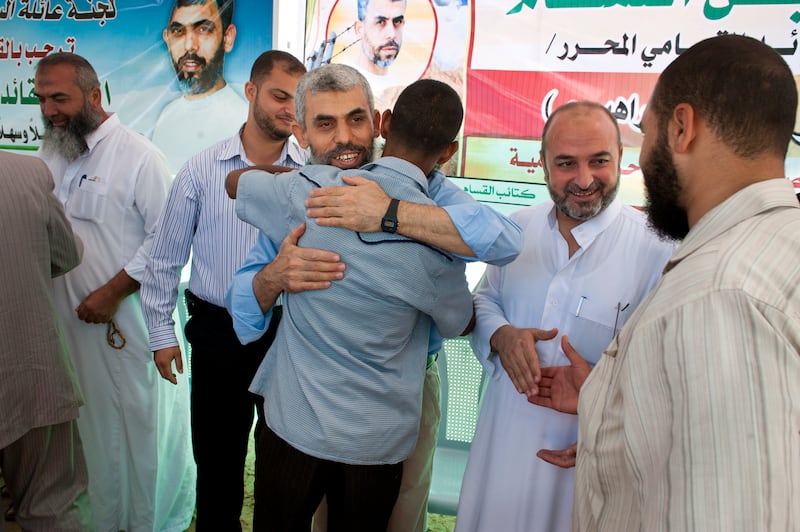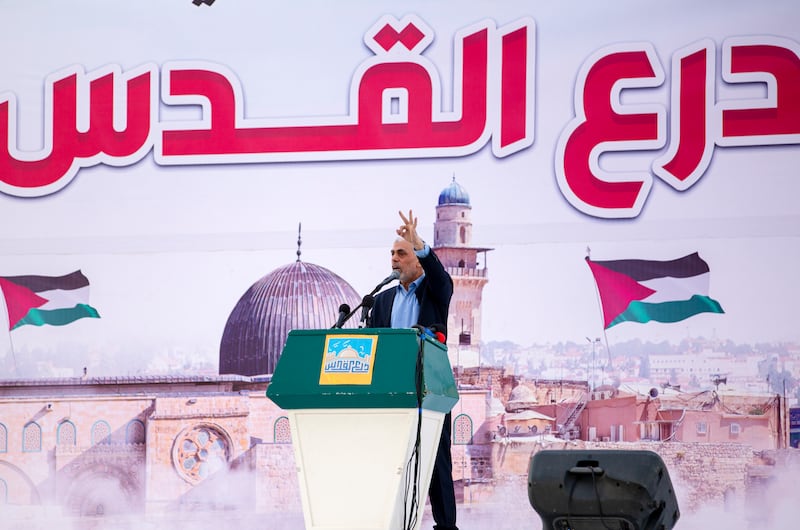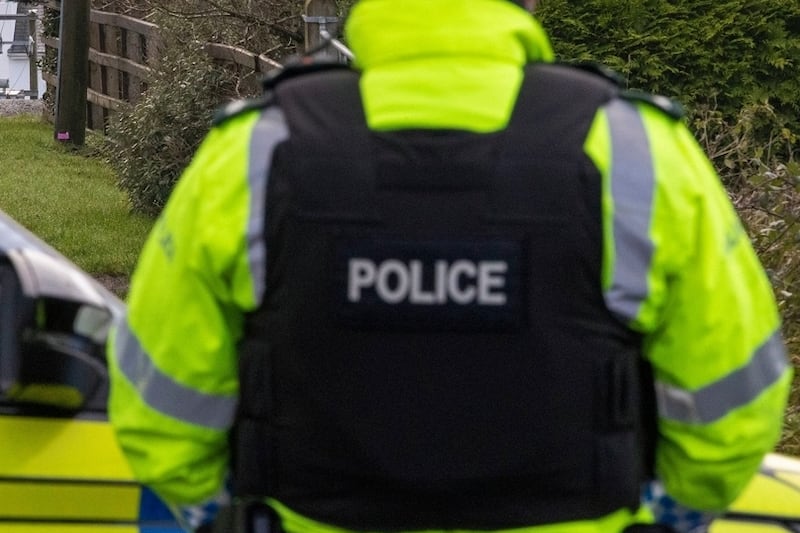Yahya Sinwar, who became the leader of Hamas earlier this week, has a history of involvement with the movement dating back to its establishment in 1987.
Before 1948, his family lived in the town of Ashqelon. During the war that led to the establishment of the state of Israel (known to Palestinians as the Nakba or catastrophe), they fled to the Gaza Strip, where Sinwar was born in 1962 in a refugee camp in Khan Younis.
He studied Arabic at the Islamic University of Gaza. During his time in university, he became involved in the student branch of the Muslim Brotherhood. Over the course of the 1980s, he drew close to Sheikh Ahmed Yassin, the first leader of Hamas, and was an early member of the movement. Sinwar was selected by Yassin to direct an internal security unit known as Al Majd which also investigated Palestinians suspected of collaborating with Israel.
He was arrested by the Israeli authorities three times and in 1989 was sentenced to four life terms in prison for his role in the abduction and killing of two Israeli soldiers and four Palestinians whom he suspected of working with the Israelis. He served 22 years, during which he learned Hebrew and studied Israeli society and culture. He was released in 2011 as part of a prisoner swap in which more than 1,000 Palestinians exchanged for a single Israeli soldier, Gilad Shalit.
READ MORE
Sinwar is widely suspected of being the architect of the October 7th attacks on Israel that inaugurated the current and most brutal phase of the conflict. In December of last year, Israeli prime minister Binyamin Netanyahu claimed that the Israeli Defence Forces (IDF) had surrounded Sinwar’s home in Khan Younis. However, he was believed to be in hiding deep underground in the extensive tunnel network under Gaza.

Several Hamas leaders have been assassinated by Israel. Yassin, who founded the movement in 1987, in the course of the first Palestinian intifada or uprising, was killed in an Israeli attack in March 2004. He was succeeded by his deputy, Abdel Aziz al-Rantisi, a co-founder of Hamas. Al-Rantisi lasted less than a month before he was assassinated in an Israeli missile attack. His successor, Khaled Meshaal, led Hamas from 2004 until 2017. Meshaal was born in the West Bank but has lived most of his life outside the occupied Palestinian Territories. Nonetheless, he became a key figure in the movement, engaging in diplomacy and negotiation on its behalf. In 2017, Meshaal was succeeded by Ismail Haniyeh, whose assassination on July 31st led to Sinwar’s accession to the leadership.
[ Who was the Hamas political leader Ismail Haniyeh?Opens in new window ]
Hamas emerged in the first instance out of a number of changing dynamics in Palestinian political life in the late-1980s. The first of these was a shift that took place in the ideological perspective of some members of the Muslim Brotherhood in Palestine, following Israeli occupation of the West Bank, Gaza and East Jerusalem after the 1967 Six-Day War between Israel and neighbouring Arab states.
The Muslim Brotherhood had operated in Palestine as far back as the 1940s, before the establishment of the state of Israel in 1948. It adopted a focus on the Islamisation of Palestinian society whereby creating a society that abided by Islamic values, as it understood them, took precedence over resistance to Israeli occupation. Over time, some within the Brotherhood began to think in terms of more active engagement with resistance, as opposed to the slow work of “Islamising” society. They rejected what they saw as the Brotherhood’s passivity and saw their own version of Islamism as reflecting nationalist as well as religious objectives.
Whereas the Muslim Brotherhood emphasised social Islamisation as a prerequisite to confronting Israel, those who became the founding members of Hamas prioritised active struggle against the occupation. Palestinian land had been entrusted to all Muslim people, it was believed, and therefore Islamism was of direct relevance to the liberation of Palestine. This process derived considerable impetus from the first intifada, which broke out in 1987 – a period of mass civil disobedience and popular mobilisation against occupation. The endpoint of this shift in thinking was the establishment in December 1987 of Harakat al-Muqawama al-Islamiya, the Islamic Resistance Movement, or Hamas, from its Arabic acronym.
Also central to the emergence of Hamas was the evolution of the Palestinian Liberation Organisation (PLO) from proponents of armed resistance to Israeli occupation to partners with Israel in the peace process that was inaugurated in the late 1980s. Under pressure from the international community and in acknowledgment of the limitations of armed resistance in securing its goals, in 1988 the PLO recognised the state of Israel, effectively accepting the loss of 78 per cent of historical Palestine and accepting that any future Palestinian state would be formed on the remaining 22 per cent.
This became the basis of the peace process that followed but which was rejected in its entirety by Hamas. In the negotiations over subsequent decades, there was little or no recognition of key Palestinian concerns, including aspirations to statehood, the right of Palestinian refugees to return to their homes or an end to Israeli settlement-building in the occupied territories. For many Palestinians, the establishment of the Palestinian Authority under the control of the PLO simply served to stabilise the occupied territories to the benefit of Israel.

However, it wasn’t merely changing Palestinian dynamics that promoted the rise of Hamas. For Israel, at the time, an Islamic movement was seen as less threatening than secular opposition to its role in the occupied territories. In 1981, Brig Gen Yitzhak Segev told a New York Times journalist that, as military governor of Gaza, he had provided financial assistance to the Muslim Brotherhood on the basis that Israel considered “fundamentalists” less threatening than communist or nationalist Palestinian movements, while in 2009 Avner Cohen, a former Israeli religious affairs official, told the Wall Street Journal that “Hamas, to my great regret, is Israel’s creation”.
Notwithstanding its asserted opposition to the peace process, to the surprise of many observers, Hamas participated in elections to the Palestinian Legislative Council in 2006, which some observers saw as tantamount to agreement to operate within institutions established under the auspices of the peace process. Even more surprising was the victory of Hamas in those elections. The 2006 elections to the Palestinian Legislative Council saw Hamas win a majority of 77 out of 122 seats, although its victory over second-place Fatah in the popular vote was a much narrower 44.45 per cent to 41.43 per cent.
Despite the fact that the international community had, for years, been placing pressure on the Palestinians to hold democratic elections, the response to the election result was hostile. Within weeks, the United Kingdom, the United States, Canada, Norway and the European Commission suspended aid to the Palestinian Authority government. The United States provided military aid to improve the fighting ability of the Presidential Guard loyal to Mahmoud Abbas, the leader of Fatah. Israel also permitted the Presidential Guard to enhance its arsenal. In June 2007, with backing from the United States, Fatah moved to carry out a coup to oust Hamas from the Gaza Strip. Hamas pre-empted the move and, after a pitched battle, established its sole control over the territory. Governance of the West Bank and the Gaza Strip has been divided between Fatah and Hamas since then.
Decades before this, in 1988, Hamas had published its infamous charter which called for the destruction of Israel and its replacement by an Islamic society in Palestine. Nearly 30 years later in 2017, and under Meshaal’s leadership, it presented a revised version in which explicit references to killing Jews were removed, although it continued to refuse to recognise Israel.
Nonetheless, the revised charter hinted that Hamas could accept a Palestinian state within the 1967 borders, which is the position ostensibly supported by Israel and the international community, and which effectively gives recognition to the state of Israel. Following the killing of Haniyeh, many expected that Meshaal, long viewed as a more moderate figure, would resume leadership of Hamas. Sinwar, by contrast, has been seen as a hardliner when it comes to dealing with Israel, wielding an effective veto over ongoing ceasefire negotiations and willing to see the conflict continue as long as it is damaging Israel’s reputation internationally.
In a rare interview in 2018, he stated that a war with Israel was in no one’s interest, saying “Who would like to face a nuclear power with slingshots?”. Over the course of the past 10 months, the people of Gaza have been finding out to their immense cost.
Dr Vincent Durac lectures in Middle East politics in the UCD school of politics and international relations
- Sign up for push alerts and have the best news, analysis and comment delivered directly to your phone
- Join The Irish Times on WhatsApp and stay up to date
- Listen to our Inside Politics podcast for the best political chat and analysis




















